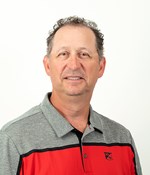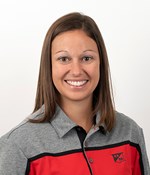Product and Agronomy Research (PAR) Results: Xyway® Fungicide Study
BY Dairyland Seed Agronomy Team
Xyway® Fungicide Study
Description:
Xyway® LFR (Liquid Fertilizer Ready) is a group 3 triazole fungicide that is applied in a 2x2 application at planting on corn. With the onset of tar spot in our area growers are looking for ways to help keep corn plants healthy through grain fill. Xyway LFR is used to control northern corn leaf blight and gray leaf spot up to reproductive stages in corn. Disease pressure was monitored through the growing season at both St. Johns and Wabash locations.
Wabash, IN
HiDF-4073Q™ was planted on May 22 at 34,000 seeds per acre in 30-inch rows. Xyway LFR was applied in 2x2.
St. Johns, MI
DS-3601AM™ and DS-4510Q™ were planted on May 17 at 32,000 seeds per acre in 30-inch rows. Xyway was applied using the Conceal (3x2x2) system.
Treatments:
- Xyway LFR (15.2 oz/A) soil applied at planting
- Xyway LFR (15.2 oz/A) at planting + Aproach® Prima (6.8 oz/A) at VT
- Xyway LFR (15.2 oz/A) at planting + Aproach Prima (6.8 oz/A) at brown silk
- Untreated
Results:
Wabash and St. Johns results combined
|
Treatment |
Average of Yield |
Estimate of Yield (LSD (0.10)=13.2) |
Yield difference |
|
Untreated |
210.334089 |
216.61 |
BC |
|
VT only Approach Prima |
224.593025 |
230.86 |
A |
|
Xyway 2x2 |
222.538852 |
228.81 |
AB |
|
Xyway 2x2 + VT Approach Prima |
221.299971 |
227.57 |
AB |
|
Xyway 2x2 + brown silk Approach Prima (St. Johns only) |
183.35 |
213.48 |
C |
Wabash results
|
Treatment |
Yield |
Est Yield (LSD (0.10)=6.08) |
Yield diff |
Avg Moisture |
Est Moisture (LSD (0.10)=0.20) |
Moisture diff |
Avg TW |
Est TW (LSD (0.10)=0.41) |
TW diff |
|
Untreated |
225.26 |
232.30 |
C |
17.60 |
18.13 |
A |
58.27 |
57.94 |
A |
|
VT only Approach Prima |
241.46 |
248.50 |
A |
18.23 |
18.76 |
B |
57.70 |
57.38 |
BC |
|
Xyway LFR 2x2 |
233.53 |
240.50 |
B |
17.70 |
18.23 |
A |
58.40 |
58.08 |
A |
|
Xyway LFR 2x2 + VT Approach Prima |
242.13 |
249.17 |
A |
18.13 |
18.66 |
B |
57.67 |
57.34 |
BC |
Conclusion:
In the hopes of comparing the efficacy of Xyway LFR on gray leaf spot suppression as well as tar spot we selected to HiDF-4073Q™ at Wabash which has a GLS score of 5, which is more susceptible to GLS infection than some other products. As often happens in research, we did not see GLS lay into either plot in recordable levels. There was very little disease in this trial block overall, the only noteworthy disease to impact this trial was tar spot which showed up at R4 across all treatments but did not progress to detrimental levels. Upon statistical analysis of this trial, we see that the application of Xyway LFR at planting + VT application of Approach Prima and a VT application of Approach Prima showed no statistical difference. The 0.67 bushel increase in yield of the Xyway LFR application and VT Approach Prima treatment vs the VT application of Approach Prima alone was likely not economically viable this year, in this location. It is important to note the increase in yield with the application of fungicides in this trial where all application’s resulted in an increase in yield, even in years of low disease expression, the plant health benefits of fungicides can increase yield. The combined data shows an increase in yield with an application foliar fungicide at VT. The VT growth stage is the most common application timing recommendation for foliar fungicides, because this allows for optimum plant health during reproductive stages. As with any pesticide use, blanket applications and overuse can lead to resistance in the pests controlled, fungicides and the fungus that they control are no different. Proper integrated pest management and the use of multiple modes of actions are recommended for long term fungicide use.
 |
 |
 |
 |
 |
| Brian Weller Western Region 507.456.3034 |
Dan Ritter Central Region 219.863.0583 |
Branden Furseth Northern Region 608.513.4265 |
Mark Gibson Eastern Region 260.330.8968 |
Amanda Goffnett Eastern Region 989.400.3793 |
